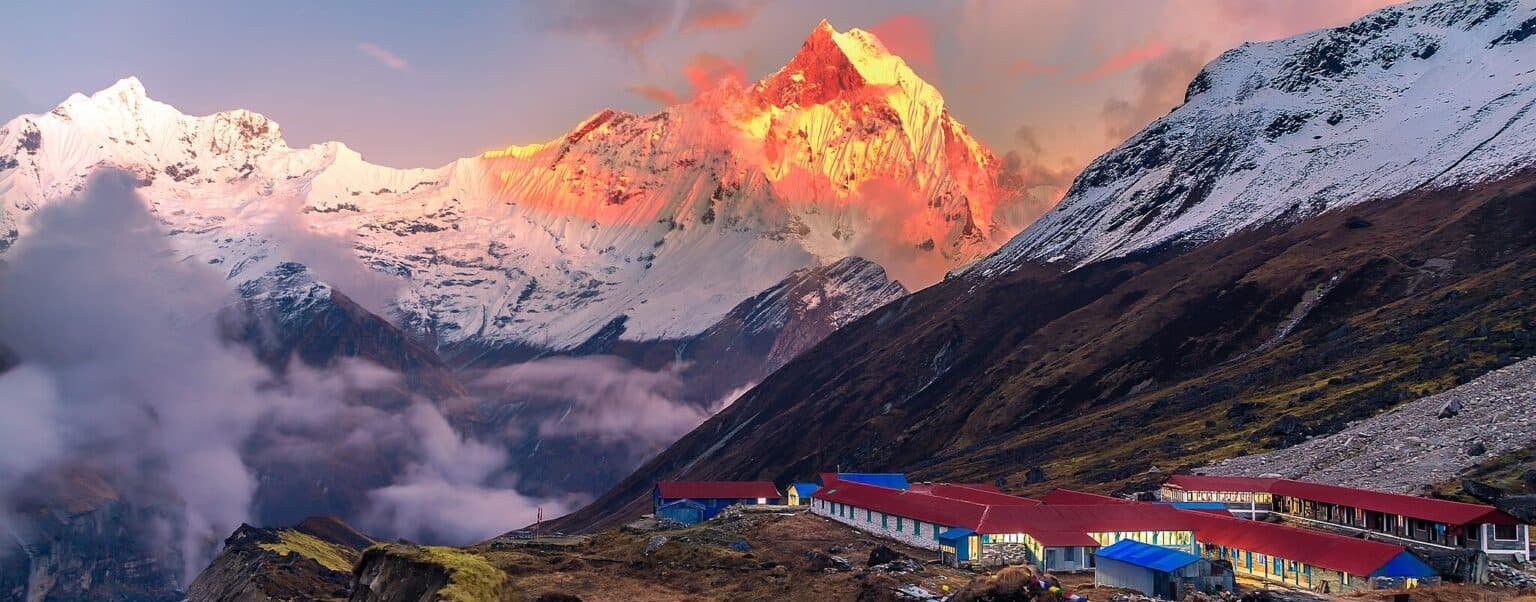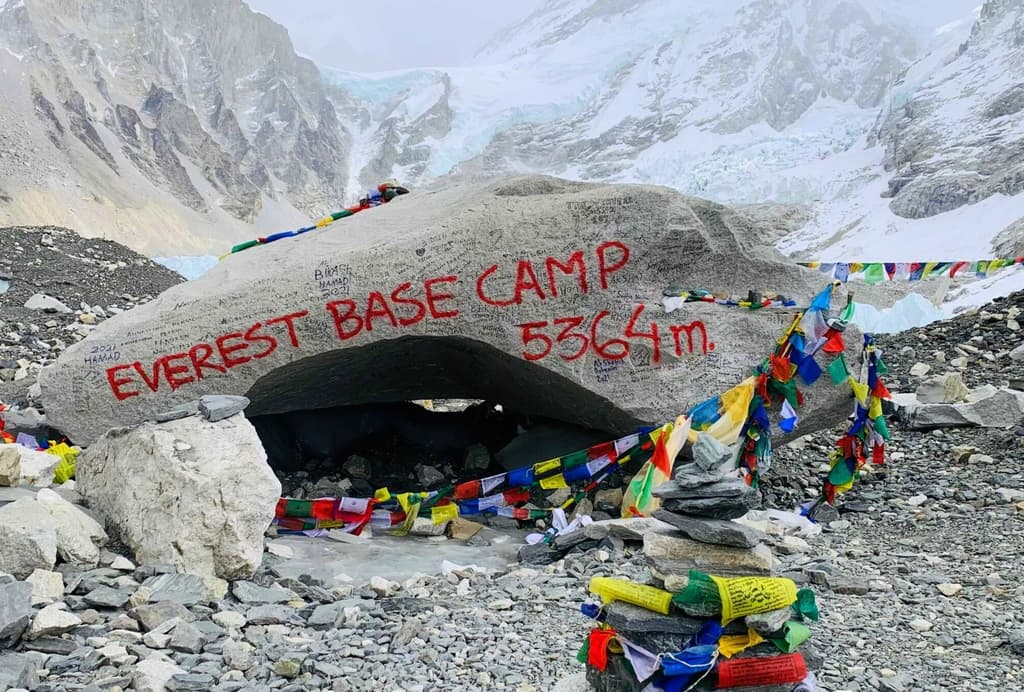Wondering if you can tackle the Annapurna Base Camp trek with little hiking experience? You're not alone. Many first-time trekkers dream of experiencing Nepal's stunning Himalayan landscapes but worry about their abilities. The good news: with proper preparation and support, beginners can absolutely complete this iconic trek.
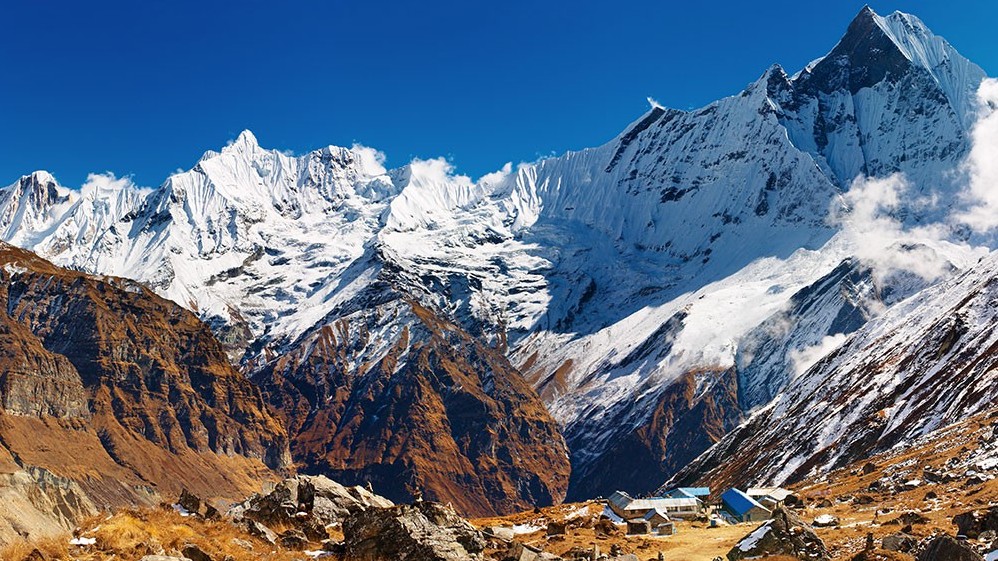
This guide is for adventure-seeking newcomers who want to challenge themselves while staying safe and enjoying the journey. We'll explore the actual physical demands of the trek, break down the technical difficulty (spoiler: it's more accessible than you might think), and share how Luxury Holidays Nepal creates custom itineraries that match your experience level.
Let's discover if the Annapurna Base Camp trek is your perfect introduction to Himalayan adventures.
Understanding the Annapurna Base Camp Trek
Overview of the trek route and duration
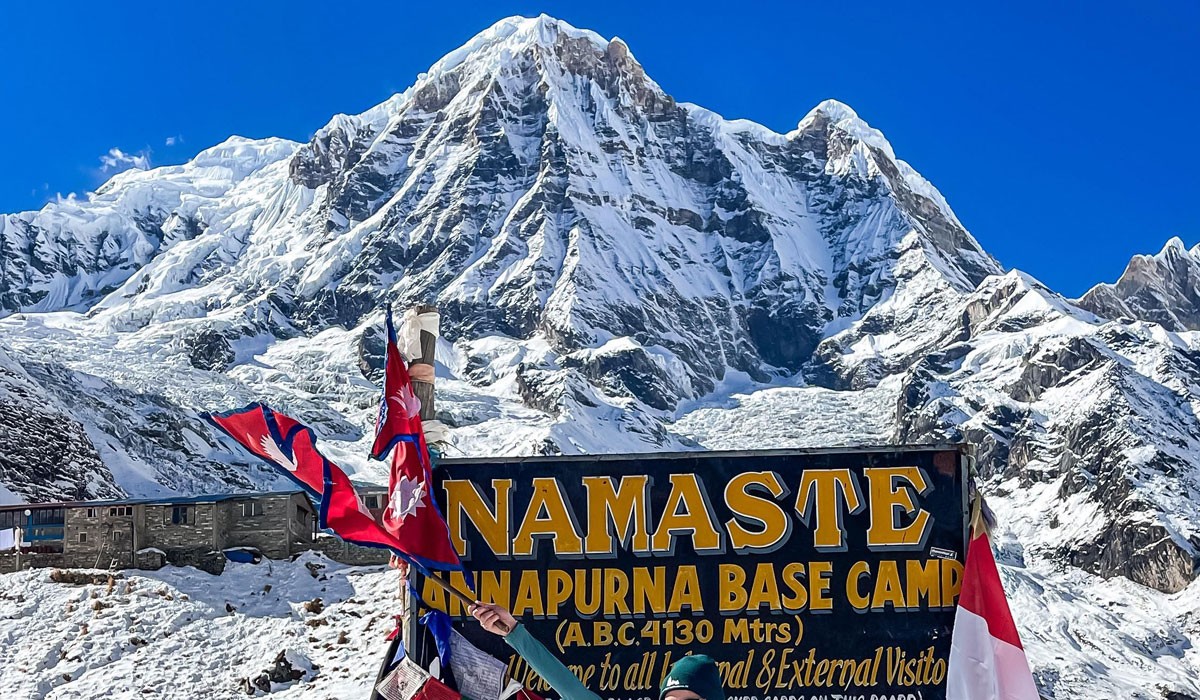
The Annapurna Base Camp (ABC) trek takes us through some of Nepal's most breathtaking landscapes. Starting from Nayapul, we follow a well-marked trail that winds through charming villages, lush forests, and terraced farmlands before reaching the spectacular amphitheater of the Annapurna sanctuary.
Most trekkers complete the journey in 7-12 days, depending on the specific route and pace. We typically recommend a 10-day itinerary for beginners to allow for proper acclimatization and time to soak in the stunning scenery. The classic route includes stops at villages like Ghorepani, Chhomrong, and Deurali before reaching the base camp at 4,130 meters (13,550 feet).
Altitude considerations and acclimatization
The ABC trek involves a significant altitude gain, with the highest point at the base camp itself. While not as extreme as some Himalayan treks, the altitude still demands respect.
We build acclimatization days into our itineraries to help trekkers adjust safely. These aren't wasted days – they're opportunities to explore nearby viewpoints, interact with locals, or simply rest. Signs of altitude sickness can include headaches, nausea, and dizziness. Our guides constantly monitor trekkers' conditions and are trained to respond appropriately.
The good news? The trek's design naturally supports acclimatization, with the "climb high, sleep low" approach built into the route.
Scenic highlights and cultural experiences
What makes ABC truly special is the incredible diversity of experiences packed into a relatively short trek. We journey through rhododendron forests that burst with color in spring, cross bamboo groves where monkeys play, and pass thundering waterfalls that showcase the raw power of nature.
The cultural dimension is equally rich. The trail passes through villages of the Gurung and Magar communities, giving us glimpses into traditional mountain life. We'll see local farming methods unchanged for generations, sample authentic regional cuisine, and perhaps witness cultural performances if our timing is right.
The crown jewel comes at the journey's end – the Annapurna Base Camp itself, where we're surrounded by a 360-degree panorama of towering peaks including Annapurna I (8,091m), Machapuchare (6,993m), and Hiunchuli (6,441m). Watching sunrise paint these giants in golden light is an experience that stays with trekkers long after they've returned home.
Physical Requirements for Beginners
Recommended fitness levels
The Annapurna Base Camp trek isn't a walk in the park, but it's absolutely doable for beginners with the right preparation. We recommend having a moderate fitness level before attempting this adventure. You don't need to be a marathon runner, but you should be comfortable walking for 5-6 hours with a light backpack.
A good baseline? If you can walk 5-7 kilometers without significant fatigue, you're on the right track. The trek involves climbing stairs and inclines, so some endurance for uphill walking is beneficial. We've guided many first-timers who prepared just a few months in advance and completed the trek successfully.
Training tips before attempting the trek
Start your preparation at least 8-12 weeks before your trip. We suggest:
-
Regular cardio workouts 3-4 times weekly (walking, jogging, cycling)
-
Stair climbing to build leg strength
-
Weekend hikes of increasing difficulty
-
Strength training focusing on legs and core
-
Walking with a loaded backpack (5-7kg) to simulate trekking conditions
Don't forget to break in your hiking boots well before the trek! Nothing ruins a beautiful hike faster than blisters.
Walking hours per day
On the Annapurna Base Camp trek, we typically walk between 4-7 hours daily, covering 10-15 kilometers. Here's a general breakdown:
|
Day |
Hours Walking |
Terrain Difficulty |
|
1-2 |
4-5 hours |
Moderate |
|
3-5 |
5-6 hours |
Moderate-Difficult |
|
6-7 |
6-7 hours |
Challenging |
We always adjust the pace based on the group's ability, taking frequent breaks to rest and enjoy the spectacular mountain views. Remember, this isn't a race - it's about the journey.
Managing altitude for first-time trekkers
The ABC trek reaches 4,130 meters (13,550 feet), where altitude sickness can affect anyone regardless of fitness. We design our itinerary with proper acclimatization days to help your body adjust.
Our tried-and-tested methods include:
-
Following the "climb high, sleep low" principle
-
Ascending gradually (no more than 500m elevation gain per day)
-
Taking rest days at critical altitude points
-
Encouraging you to drink 3-4 liters of water daily
-
Monitoring symptoms and providing immediate assistance if needed
We always tell our trekkers: go slow, stay hydrated, and listen to your body. The mountains have been there for millions of years – they'll wait for you to catch your breath.
Technical Difficulty Assessment
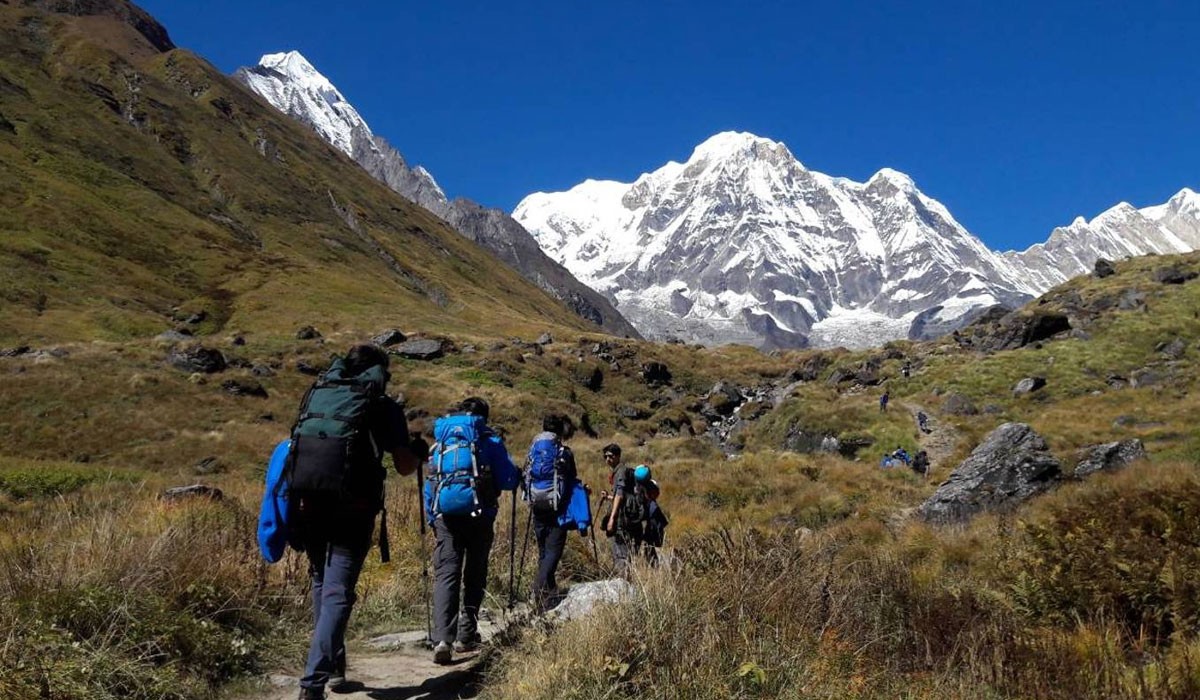
Trail conditions and terrain
The Annapurna Base Camp trek isn't a walk in the park, but it's definitely more forgiving than many other Himalayan adventures. We've guided countless first-timers through this route, and the trail offers a nice progression of difficulty.
You'll start on well-maintained paths through charming villages before gradually climbing up stone steps and more rugged terrain. Most of the trail consists of established footpaths with stone steps in steeper sections. The trek maxes out at 4,130 meters (13,550 feet) at the base camp itself, which is considerably lower than many other Himalayan treks.
What makes ABC more beginner-friendly is the gradual altitude gain. The trail undulates through various elevations rather than climbing continuously, giving your body time to adjust to the thinning air. That said, there are some challenging days with 6-7 hours of hiking and up to 800 meters of elevation gain.
The terrain varies from lush rhododendron forests in the lower regions to more exposed rocky paths as you approach the sanctuary. During monsoon season (June-September), trails can get slippery and leech-infested, while winter brings snow to the higher sections.
Comparison with other popular Himalayan treks
|
Trek |
Max Altitude |
Duration |
Technical Difficulty |
Best for Beginners? |
|
Annapurna Base Camp |
4,130m |
7-11 days |
Moderate |
Yes |
|
Everest Base Camp |
5,364m |
12-16 days |
Moderate-High |
No |
|
Langtang Valley |
3,870m |
7-10 days |
Easy-Moderate |
Yes |
|
Manaslu Circuit |
5,106m |
14-18 days |
High |
No |
|
Ghorepani Poon Hill |
3,210m |
4-6 days |
Easy |
Yes++ |
Compared to the Everest Base Camp trek, ABC is generally less demanding with a lower maximum altitude and shorter duration. We've found most beginners struggle more with EBC due to its higher elevation and colder temperatures.
The Manaslu Circuit requires permits and a guide, tackling high passes that demand more technical skill and endurance. ABC offers similar spectacular mountain views without pushing you to such extremes.
If you're really concerned about difficulty, Ghorepani Poon Hill might be a better first trek, but it doesn't deliver the same experience of being surrounded by towering peaks that you get at Annapurna Base Camp.
Navigation and trail marking
Good news for beginners – the ABC trek follows a well-established route that's generally easy to navigate. We rarely encounter clients getting lost on this trail.
The main path is clearly defined throughout most sections, with regular trail markers at key junctions. In villages and tea house areas, you'll find signposts with distances and estimated times to the next stops. As you climb higher, painted markers on rocks help guide the way in areas where the path might be less obvious.
During peak trekking seasons (October-November and March-May), you'll find plenty of other trekkers and locals moving along the trail, making navigation even more straightforward. Even in off-season, teahouse owners and locals are incredibly helpful in pointing you in the right direction.
That said, weather conditions can change rapidly in the mountains. Fog, snow, or heavy rain can significantly reduce visibility and make navigation challenging. This is one reason we always recommend hiring a guide for beginners – not just for direction but for overall safety and cultural insight.
Best Seasons for Beginner Trekkers
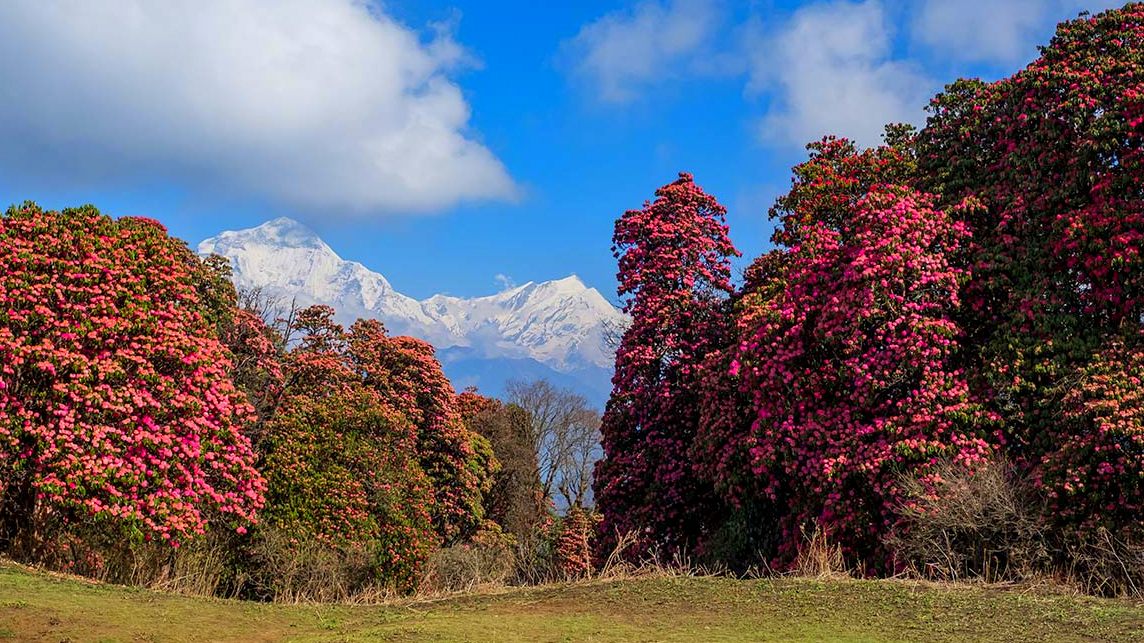
Weather conditions throughout the year
Picking the right season can make or break your Annapurna Base Camp trek, especially if you're new to trekking. We've guided countless first-timers through these magnificent trails and know exactly when conditions are most forgiving.
Spring (March-May) brings moderate temperatures (10-20°C during the day) and spectacular rhododendron blooms that transform the forests into a riot of colors. The skies stay clear most days, offering those postcard-perfect mountain views you're dreaming about.
Fall (September-November) is our personal favorite for beginners. Temperatures hover between 8-18°C with minimal rainfall and crystal-clear mountain panoramas. The post-monsoon freshness means you'll experience the landscape at its vibrant best.
Winter (December-February) gets chilly (sometimes dropping to -10°C at higher elevations), but the trails are wonderfully quiet. Just pack those extra thermal layers!
Summer/monsoon (June-August) brings daily rainfall, leeches, and obscured mountain views. We generally don't recommend this time for first-timers.
Peak vs. off-peak season benefits
Going during peak seasons (October-November and March-April) means you'll enjoy:
-
Perfect weather conditions with clear skies
-
Well-maintained trails with regular foot traffic
-
Lively teahouses with fellow trekkers to share stories with
-
Maximum safety with more trekkers and guides on the route
But there's something magical about off-peak treks too:
-
Significantly fewer crowds on the trail and at viewpoints
-
Lower prices for accommodations and sometimes guides
-
More authentic local interactions without tourist crowds
-
A sense of adventure and solitude in the mountains
We've found many beginners actually prefer shoulder seasons (late September or early December) for a balance between good weather and fewer crowds.
Avoiding monsoon challenges
The monsoon season (June-August) throws some serious curveballs at trekkers. Here's how we help beginners navigate this tricky time:
First, pack quality waterproof gear—not just a rain jacket, but waterproof pants, pack cover, and dry bags for electronics and clothes. Nothing wrecks a trek faster than being constantly wet.
Leeches become a real nuisance during monsoon. We recommend carrying salt packets or leech socks if you absolutely must trek during this time.
Visibility is another major issue—those majestic Himalayan views often hide behind clouds. Plan extra buffer days if mountain views are important to you.
Landslides can block trails, potentially extending your trek duration. We always check trail conditions daily and maintain flexible itineraries during monsoon season.
If you're set on a summer trek, consider the rain shadow areas of upper Mustang or Dolpo instead—they receive significantly less rainfall even during monsoon months.
Essential Preparations for First-Time Trekkers
Packing essentials for comfort and safety
The Annapurna Base Camp trek demands smart packing - not too much, not too little. We've guided hundreds of first-timers and know exactly what you'll need.
Start with quality hiking boots (broken in before the trip!) and moisture-wicking layers. The temperature varies dramatically between day and night, so we recommend the layer system: base layer, insulation layer, and waterproof outer layer.
Don't forget these essentials:
-
A good backpack (30-40L for day hiking)
-
Sleeping bag rated for cold temperatures
-
Headlamp with extra batteries
-
Water purification tablets or filter
-
Basic first aid kit with blister treatment
-
Trekking poles to save your knees
-
Sun protection (hat, sunglasses, sunscreen)
-
Hand sanitizer and toilet paper
Your phone might not have service, but it's great for photos. Bring a portable charger since electricity isn't always available at teahouses.
Required permits and documentation
We can't stress this enough - trekking without proper permits can lead to hefty fines or even being turned back. You'll need:
-
TIMS Card (Trekkers' Information Management System) - $20 for individual trekkers
-
Annapurna Conservation Area Permit (ACAP) - $30 per person
Your passport with at least 6 months validity is required for both permits. We suggest getting these in Kathmandu or Pokhara before starting your trek. We can arrange this for you when you book with us, saving you valuable time.
Keep these documents in a waterproof bag and carry copies separately as backup.
Budget planning and expectations
The Annapurna Base Camp trek is surprisingly affordable compared to other world-class adventures. We've broken down the typical costs for a 10-12 day trek:
|
Expense |
Cost (USD) |
|
Permits |
$50 |
|
Guide |
$25-30 per day |
|
Porter |
$20-25 per day |
|
Teahouse accommodation |
$5-15 per night |
|
Meals |
$20-25 per day |
|
Transportation |
$40-60 round trip |
The higher you go, the more expensive food becomes - that's just the reality of mountain economics. Teahouses offer basic but comfortable accommodation, usually with shared bathrooms.
We recommend budgeting around $25-30 per day for food and accommodation, plus extra for snacks, hot showers ($2-5), and Wi-Fi ($2-5 per use).
Travel insurance considerations
This isn't where you want to cut corners. We've seen too many trekkers face financial disaster when things go wrong.
Your insurance must cover:
-
Trekking activities up to 4,130m (ABC's altitude)
-
Emergency helicopter evacuation
-
Medical treatment in Nepal
-
Trip cancellation/interruption
-
Personal belongings/equipment
World Nomads and Safety Wing offer solid coverage for trekkers. Expect to pay $100-200 for comprehensive coverage.
Check the fine print regarding altitude limits - many standard policies don't cover activities above 3,000m. Also confirm coverage for pre-existing conditions if applicable.
Keep digital and physical copies of your policy details, and share emergency contact information with your guide and family back home.
Accommodation and Facilities Along the Route
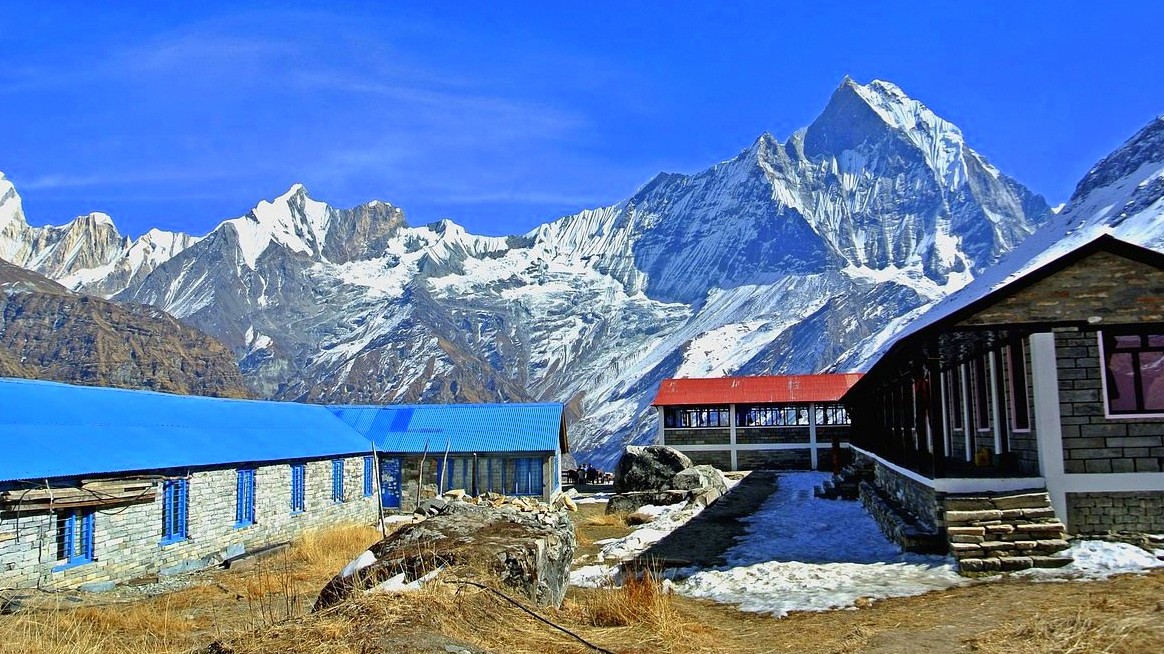
Teahouse amenities and limitations
The teahouses along the Annapurna Base Camp trek have come a long way in recent years, but they're still basic mountain accommodations. Most offer private rooms with twin beds and simple mattresses. Blankets are typically available, but we always recommend bringing your own sleeping bag for hygiene and those chilly nights when temperatures drop significantly.
Bathrooms? Well, don't expect luxury here. Most teahouses have shared toilet facilities – a mix of western-style and squat toilets depending on the location. The higher you climb, the more basic they become. Hot showers are available at most places but they'll cost you extra (around NPR 200-500) and are typically solar-powered, so morning showers might mean cold water!
The walls are thin, really thin. You'll hear your neighbors snoring, talking, or moving around. Earplugs are your best friends on this trek.
Food options for varying dietary needs
Mountain menus have evolved dramatically. Almost every teahouse now offers the famous "Dal Bhat" (rice and lentil soup) which comes with unlimited refills – perfect for hungry trekkers! But you'll also find momos (dumplings), noodle soups, pasta, pizza, and even apple pie at some locations.
Vegetarians have plenty of options throughout the route. For vegans or those with gluten allergies, the choices narrow as you ascend, but it's still manageable with some planning. We always tell our clients with specific dietary requirements to communicate this in advance.
The food gets pricier as you climb higher – basic economics of difficult supply chains. A meal that costs NPR 300 in lower regions might be NPR 700-800 near the base camp.
Charging facilities and connectivity
Connectivity is spotty but improving yearly. Most teahouses below 3,000m offer Wi-Fi for an additional fee (NPR 200-500), though don't expect high-speed internet! The signal weakens dramatically as you ascend.
For charging devices, nearly all teahouses have electricity outlets available, usually in common areas. They typically charge NPR 200-500 per device. Power is often limited to certain hours, especially at higher elevations where many places run on solar power.
Mobile coverage exists for much of the lower trail with NCell and Nepal Telecom (NTC) networks, but becomes unreliable above Chomrong. We recommend purchasing a local SIM card in Kathmandu or Pokhara before starting your trek.
Many of our clients end up embracing the digital detox aspect of the trek – there's something magical about disconnecting while surrounded by some of the world's most spectacular mountains.
Guide and Porter Services by Luxury Holidays Nepal
Benefits of trekking with experienced guides
The Annapurna region isn't just another mountain – it's a complex maze of trails, weather patterns, and altitude challenges. That's why we never compromise on guide quality for our trekkers. Our guides have spent years (sometimes decades!) traversing these paths and know every shortcut, viewpoint, and potential hazard along the way.
For beginners especially, having someone who can pace your trek appropriately makes all the difference. Our guides adjust the daily walking schedule based on your fitness level and acclimatization needs. They'll tell you when to push forward and when to take it slow, ensuring you're challenging yourself without risking your health or enjoyment.
Beyond navigation, our experienced guides are trained in wilderness first aid and altitude sickness prevention. They monitor your health throughout the journey, often spotting early warning signs before you even notice them yourself.
Porter assistance for beginners
First-time trekkers often underestimate how exhausting carrying a full pack at high altitude can be. That's where our porters come in – true mountain heroes who can transform your trekking experience from grueling to genuinely enjoyable.
We recommend porter assistance for all beginners tackling the Annapurna Base Camp trek. With porters handling the heavy lifting (typically 15-20kg of your gear), you're free to focus on the stunning landscapes, photography opportunities, and simply catching your breath during challenging sections.
Our porters aren't just luggage carriers – they're integral team members with incredible local knowledge. Many have grown up in these mountains and share fascinating insights about local life that you'd never discover in any guidebook.
Safety protocols and emergency procedures
Safety isn't an afterthought for us – it's built into every aspect of our treks. We've developed comprehensive emergency response systems that include satellite communication devices, detailed evacuation plans, and connections with rescue services throughout the region.
All our treks maintain strict guide-to-trekker ratios to ensure everyone receives proper attention. Before departure, we conduct thorough briefings covering altitude sickness symptoms, proper hydration, and what to do if you start feeling unwell.
We've also established checkpoints with our office throughout the trek, meaning our team always knows your location and status. In the extremely rare case of serious emergencies, we coordinate helicopter evacuations – something we have experience managing efficiently when necessary.
Cultural interpretation advantages
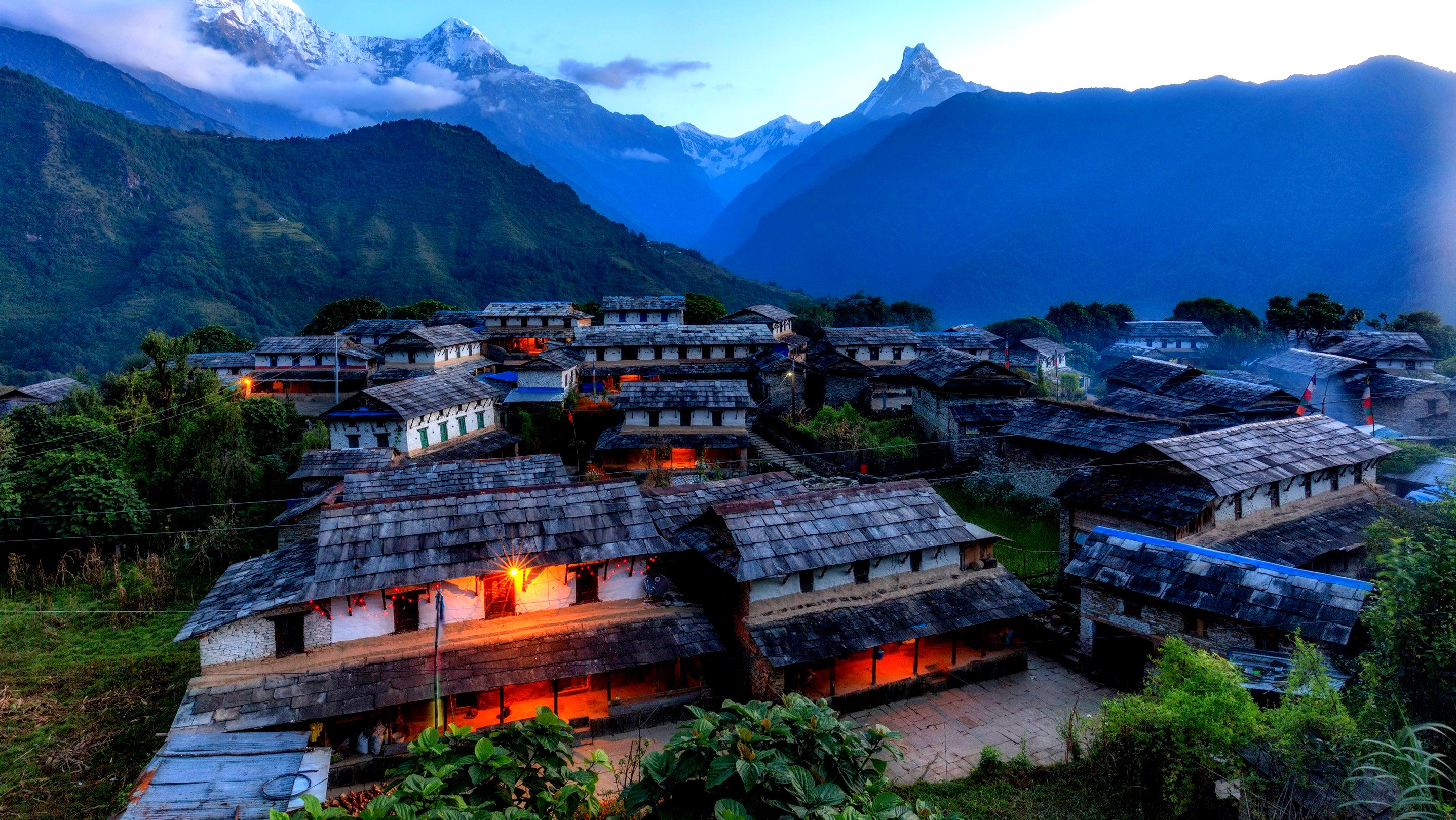
The Annapurna region isn't just about mountains – it's home to diverse ethnic communities with fascinating traditions. Our guides don't just lead you along trails; they unlock cultural experiences you'd completely miss traveling solo.
They'll introduce you to local Gurung and Magar villagers, explain the significance of prayer flags and stupas along the route, and translate conversations with locals you meet along the way. Many trekkers tell us these cultural interactions become their most treasured memories.
We also arrange special experiences like visiting traditional homes, participating in local ceremonies when possible, and explaining the significance of the monasteries and temples you'll encounter. These cultural insights transform your trek from a physical challenge into a genuine Himalayan immersion.
Customized Itineraries for Different Experience Levels
Extended itineraries for slower acclimatization
We understand that not everyone climbs at the same pace. That's why we've designed flexible ABC trek itineraries that give beginners the extra time they need to adjust to the altitude changes. Our standard 7-day itinerary works for most trekkers, but we've created 10-12 day options that include more overnight stops at lower elevations.
These extended schedules break up the steeper sections into manageable chunks. Instead of pushing from Bamboo to Himalaya in one day, we might stop at Dovan, giving you time to rest and enjoy the surroundings. The magic of a slower trek? You'll actually see more of the incredible landscapes and have meaningful interactions with locals in the teahouse villages.
Rest day options and side excursions
Taking rest days isn't a sign of weakness—it's smart trekking! We build optional rest days into our itineraries at places like Ghandruk and Chhomrong. These aren't just for catching your breath; they're opportunities to explore.
From Chhomrong, we can take you on a half-day hike to nearby viewpoints without your heavy backpack. In Ghandruk, we'll arrange cultural visits to traditional Gurung homes. These side adventures give your body time to adjust while keeping the experience rich and varied.
Shortened routes for time-constrained travelers
Short on vacation days but still want the ABC experience? We've got you covered. Our condensed 5-6 day itineraries use strategic transportation combinations to maximize your time in the mountains.
We might arrange a jeep to Nayapul and then to Ghandruk, shaving off a full day of trekking. For the descent, we sometimes recommend the route via Jhinu Danda hot springs—it's faster and gives your knees a well-deserved soak after the downhill sections.
The Annapurna Base Camp trek presents a remarkable opportunity for beginners to experience the majesty of the Himalayas. While it requires moderate fitness and preparation, the trek's well-established trails, available facilities, and customizable itineraries make it accessible for first-time trekkers. With proper planning, choosing the right season, and utilizing the comprehensive guide and porter services offered by Luxury Holidays Nepal, beginners can confidently undertake this breathtaking journey.
Your adventure to Annapurna Base Camp awaits, regardless of your trekking experience. Take inspiration from the numerous success stories of beginners who have completed this trek, and allow Luxury Holidays Nepal to tailor your experience to match your comfort level and aspirations. With the right preparation and support, you'll soon be standing amidst the Himalayan amphitheater, collecting memories that will last a lifetime.
If you need any further information, please contact us by email: at [email protected], Phone: at +977- 985 100 5129 (WhatsApp)

